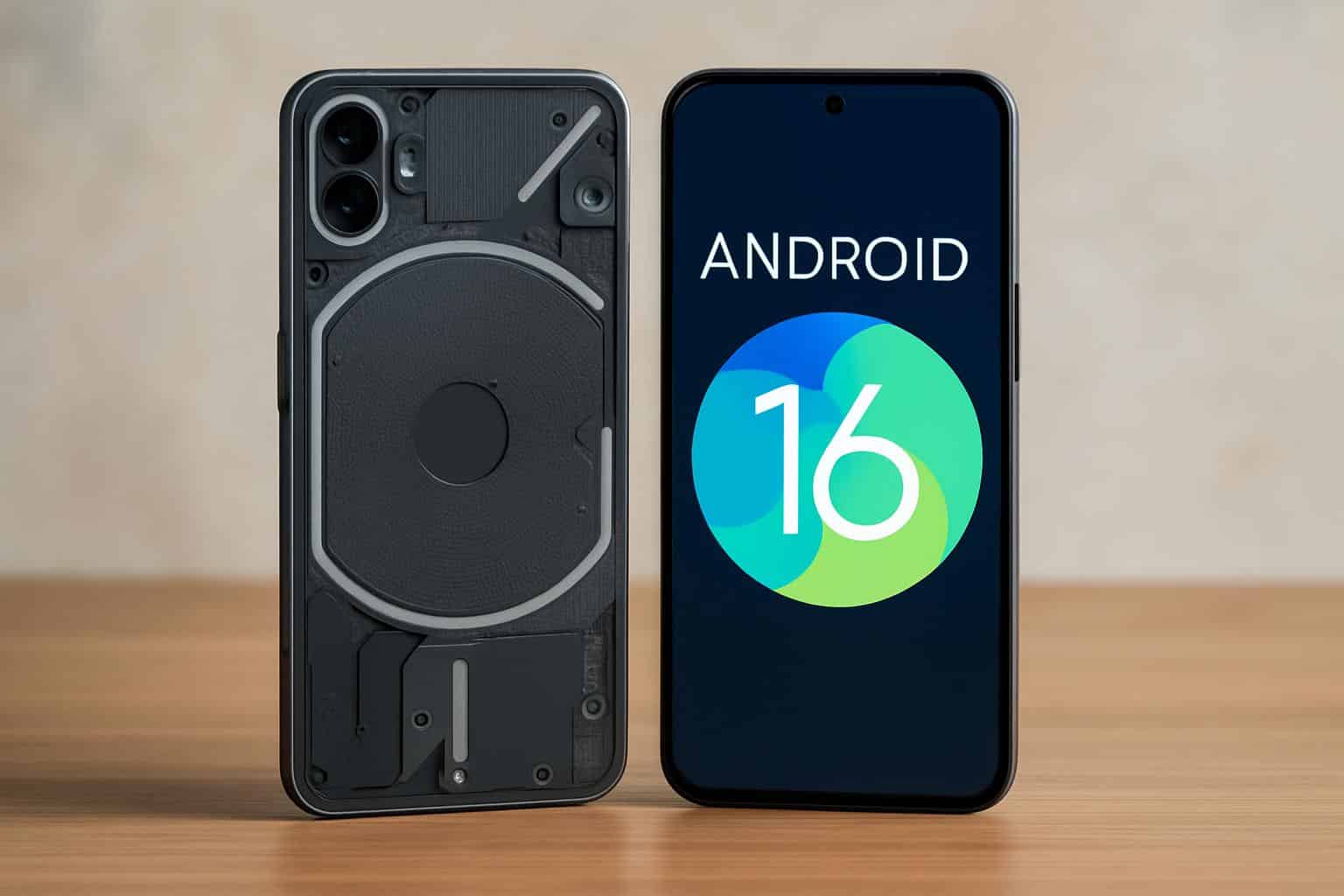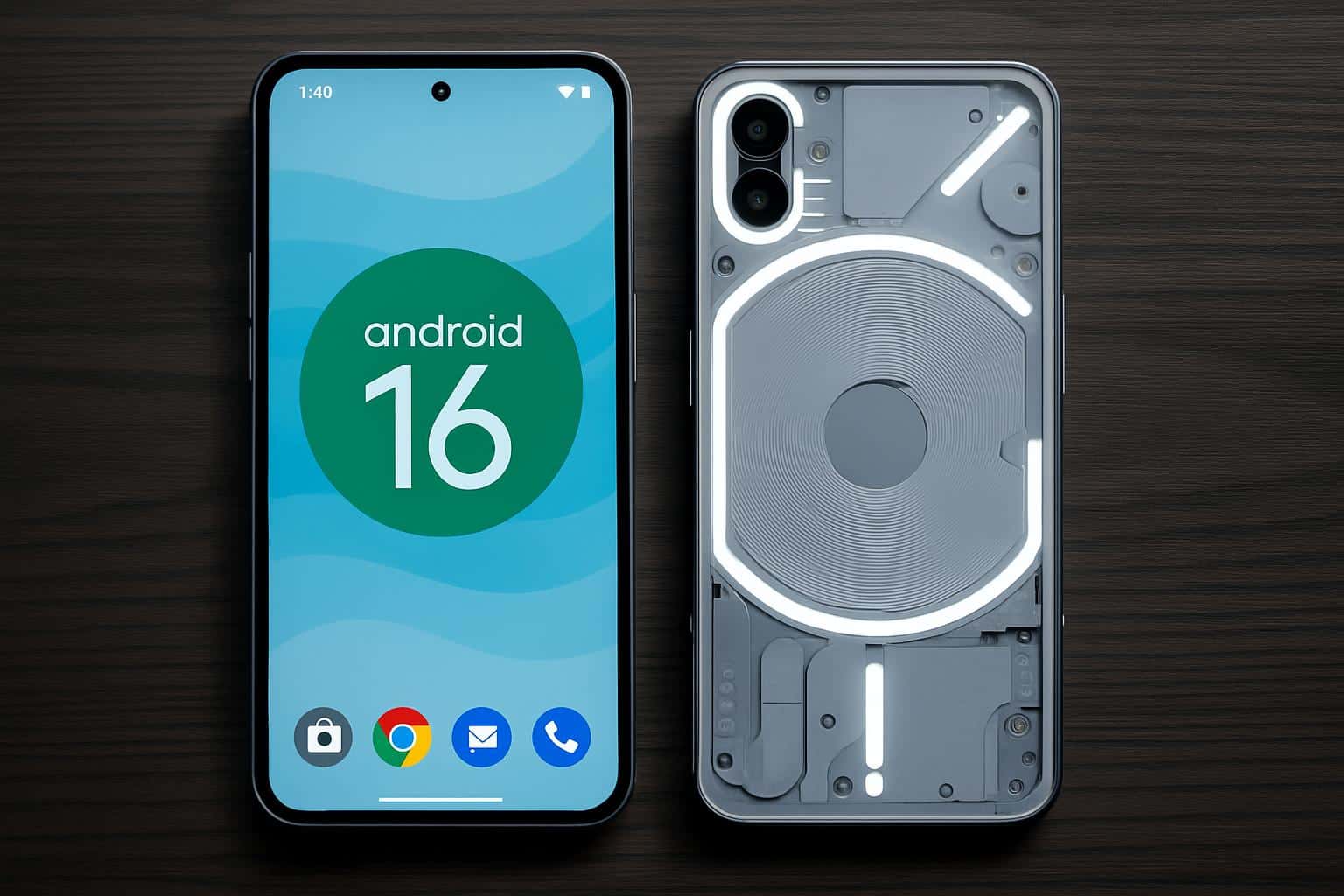A Nothing Phone 1 owner has apparently managed to do what most had thought was forbidden, as they’ve booted an unofficial build on the two-year-old handset, atop Android 16-based Nothing OS 4.0.
If true, it’s a stunning proof of concept for a device that does not fall under the company’s existing Android 16 beta program.

The rumor comes courtesy of a community post by YouTuber TechiBoy, who claims that an unnamed developer was able to get the new OS running smoothly on a Phone 1, complete with working preset shortcuts for the updated Camera app. Initial notes mention that the port boots cleanly and can be easily used, though it’s in development at the moment and not being released to the public yet.
Nothing OS 4.0 is currently available in beta form for newer models — the Phone (2), (2a), (2a) Pro, and the soon-to-arrive(ish), market- and spec-dependent Phone 3 — leaving the first generation (Phone 1) hanging on the ropes for now. That void is what modders and power Android users are often looking to fill.
How the port could possibly happen on Phone 1 hardware
Starting with Android 8, Project Treble by Google isolates the base OS from low-level vendor code through Generic System Images, which make cross-device ports more practical. In reality, a working port still requires meticulous work:
- Unlocking the bootloader
- Translating the device tree for this phone
- Pulling proprietary vendor blobs (hardware drivers tightly integrated into Android)
- Ensuring the kernel plays nicely with the framework
Nothing OS adds extra hurdles. Features such as the Glyphs interface, the camera stack, and system overlays are built on proprietary frameworks that don’t get along with other hardware as well. Assuming that this build of Android 16 really is running the updated Camera app and presets from the Phone 1, it indicates that the developer has just wreaked some particularly inspired hackery to remap those hardware abstraction layers and resource overlays.
What works now and what still fails on the early port
With the initial report, day-to-day usability is looking good and so too is the marquee camera experience. That’s strange to see this early in a port, as camera stacks are typically the last thing to get locked down because of sensor tuning and ISP dependencies.
There are known quirks. The status bar clock supposedly is not aligned properly, and the camera preview does indeed peek below the punch-hole cutout. Those are standard overlay-related problems: definition of the cutout and status bar metrics, which would probably require new resource packages or changes to Overlay Manager Service. Expect a few more rough edges until developers remove them.
Even if the system feels fine, it’d be prudent for enthusiasts to accept that common side effects include:

- Play Integrity/SafetyNet breaking
- Contactless payments ceasing to function
- DRM falling from Widevine L1 to L3
- Idle drain and thermals differing from stock
(I don’t have confirmation of those here, but they’re typical of early ports.)
Why This Is Important For Phone 1 Owners
The Phone 1 was released on Android 12 and has since ascended through the various iterations via its big software updates. Nothing pledged to three OS updates and several years of security patches for the device, which leaves Android 16 anyone’s guess via an official path. An unofficial route could prolong the phone’s useful life as well as let users test new platform features before any official roadmap.
Android is also fun and predictable that way, with ordinary OEMs who integrate and certify builds on their own timelines. Traditionally, forum communities like XDA Developers have been the ones to step into that gap with ports and custom ROMs, allowing older hardware to stay up-to-date far past manufacturer intentions. This attempt fits that pattern.
Proceed with caution if you flash early unofficial builds
This is not something that you would do if you’re a casual user, but let’s see how we can replicate the process. Flipping the switch on the bootloader will erase the phone and could void support. Remember, wrong instructions or files while flashing low-level partitions can hard brick a device. Some security-sensitive apps, such as those for banking and transport, won’t work on modified firmware.
If a build is out there, use thorough backup systems, read the community feedback, and verify the person’s name. Find changelogs, known-issues lists, and feedback threads. Eventually, a stable release will have recovery instructions, rollback paths, and, hopefully, source changes to be transparent.
Outlook for an Android 16 build on Nothing Phone 1
So for now, consider the port a very exciting proof-of-concept. If the developer does a public photo share, I would expect to see some community testing for polish, overlays, camera tuning, radio stability, and Play Integrity workarounds. Nothing’s community forums and other developer hubs will likely be the first to break the news when it’s ready.
It’s not clear if the Phone 1 will ever get an official Android 16 upgrade, but this endeavor is a reminder of a larger fact about Android in general — that with Treble, open kernels, and an active developer scene, the software ceiling for good hardware often reaches higher than what appears on a spec sheet.

